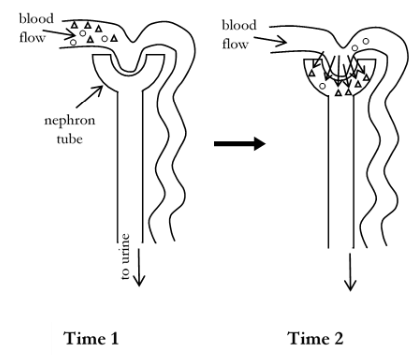Human Kidney Function
How the Human Nephron Filtrate in Our Blood
Abstract
The mechanism by which the human kidney cleanses the blood and produces urine is a complex and dynamic process. This activity is designed to have students construct an understanding of the function of the nephron found in the human kidney. It introduces the processes of glomerular filtration, tubular secretion, tubular reabsorption and secretion which are applications of various types of membrane transport. Students compare the different processes as well as learn to calculate plasma clearance which provides information to deduce kidney health in a non-invasive manner.
This activity is appropriate for a 200-level undergraduate university human physiology classroom for pre-health students who have completed college biology and chemistry for allied health majors. The typical classroom size is 50-65 students (in groups of 4 students) with 2-3 teaching assistants helping the instructor facilitate the activity.
Level: Undergraduate
Setting: Classroom
Activity Type: Learning Cycle
Discipline: Biology
Course: 200-level Human Physiology course
Keywords: nephron, glomerular filtration, tubular reabsorption, tubular secretion, excretion, plasma clearance

Downloads
Published
How to Cite
Issue
Section
License
Copyright of this work and the permissions granted to users of the PAC are defined in the PAC Activity User License.

